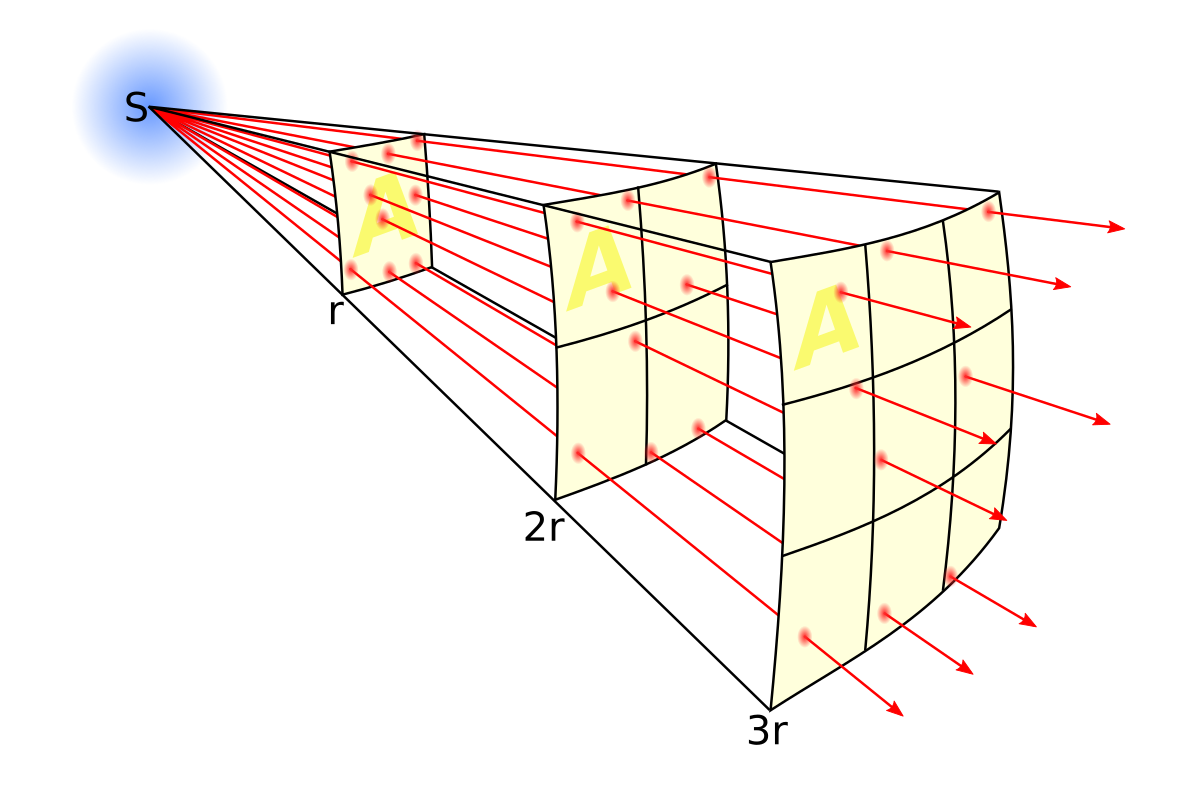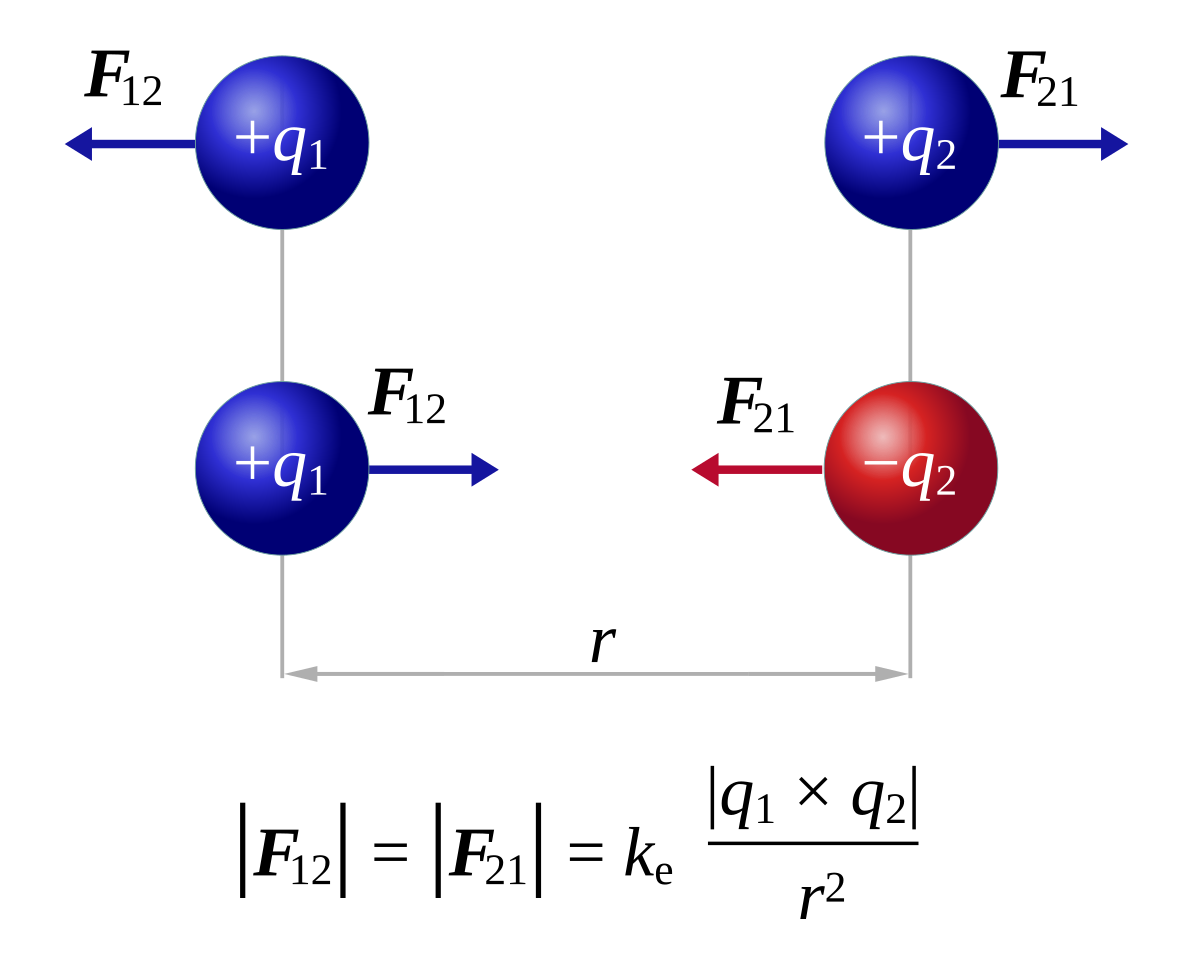Darkover
Archangel
- Jul 29, 2021
- 5,653
the inverse square law applies to the intensity of light but also to gravitational and electrical forces
Since the intensity of light area increases as the square of the distance, the intensity of the light must decrease as the inverse square of the distance. Thus, intensity follows the inverse-square law.
The force of attraction or repulsion between two electrically charged particles, in addition to being directly proportional to the product of the electric charges, is inversely proportional to the square of the distance between them; this is known as Coulomb's law.
 en.wikipedia.org
en.wikipedia.org

 en.wikipedia.org
en.wikipedia.org

 en.wikipedia.org
en.wikipedia.org
Since the intensity of light area increases as the square of the distance, the intensity of the light must decrease as the inverse square of the distance. Thus, intensity follows the inverse-square law.
The force of attraction or repulsion between two electrically charged particles, in addition to being directly proportional to the product of the electric charges, is inversely proportional to the square of the distance between them; this is known as Coulomb's law.
Equations for a falling body - Wikipedia

Inverse-square law - Wikipedia







